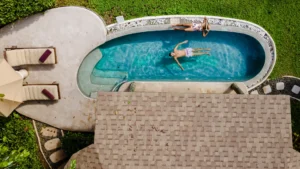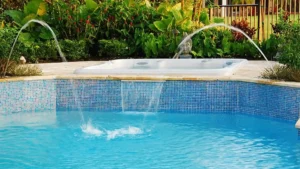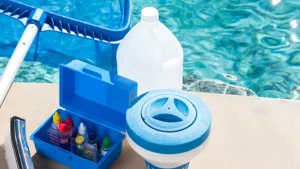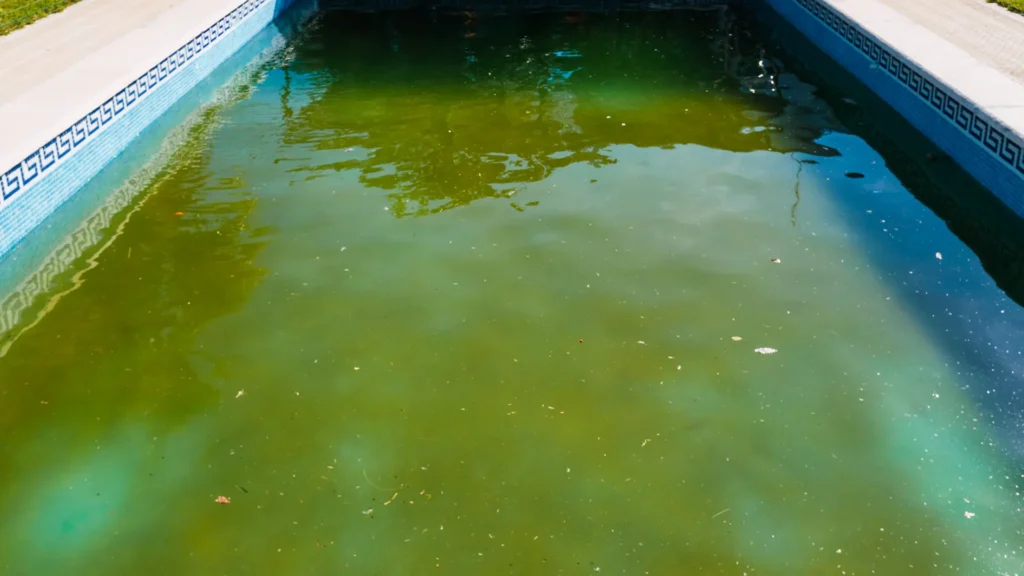
Your pool is probably a welcome retreat for you after a long and difficult week at work, and why shouldn’t it be?
Pools with crystal-clear water are practically begging to be splashed around in, and all that opportunity for fun in the sun, exercise, and general revelry can make your investment in your pool pay off in a big way, as long as you stay ahead of issues like Vegetation Fertilizer Pool Impact.
But obviously, maintaining your pool’s luminous appeal won’t come easy, and for many individuals, it can be a struggle just to get the right balance of chemicals in the water. That’s why Amenity Pool Services is just the thing to keep your swimming water looking sharp, clean and, best of all, ready to jump into!
It helps to know a thing or two about the way your pool is affected by outside elements like vegetation and fertilizers. So let’s learn on what kind of impact these can have on your swimming water.
Fertilizer in pool water: What are phosphates?
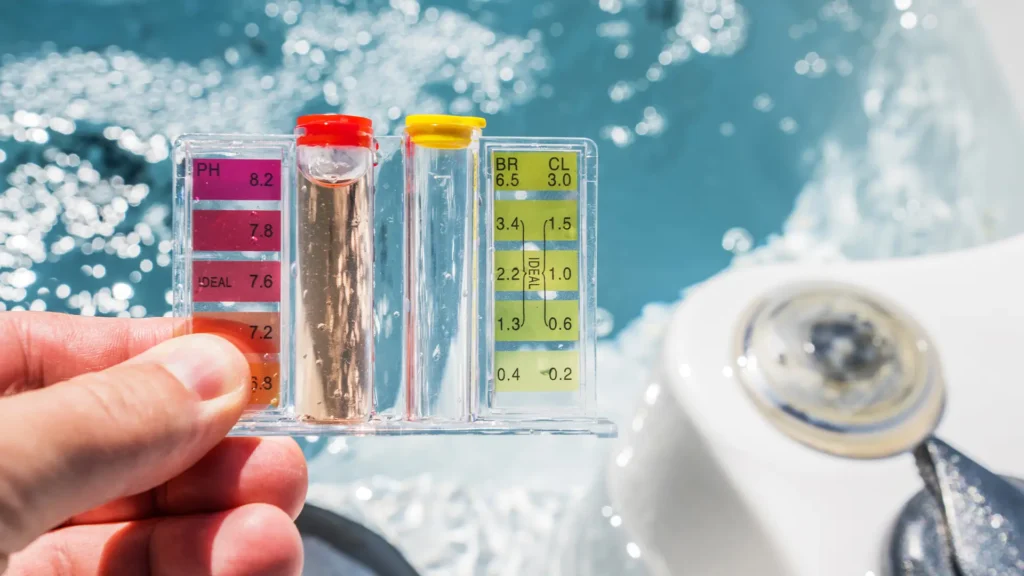
One of the biggest challenges that you’ll likely face as a pool owner is the exposure of your water to phosphates.
What are these, exactly?
First, they’re the main food for aquatic plants including all types of algae. Secondly, phosphates are made up of compounds of phosphorus, which is a nonmetallic element.
If phosphates are allowed to linger in your pool or spa, they can eventually become the primary source of black spots in the pool like algae and form a sort of welcome party for other types of molds or worse, because essentially their presence is an open invitation for more to grow.
How do phosphates get into the pool?
You may be wondering how something as annoying as phosphates managed to get into your pool. Well, it’s simple: Decaying vegetation and some fertilizers can be the cause of phosphate exposure and proliferation in your pool’s water.
These may also introduce nitrates into your water, which are found most often in leaves, manure, sewage, and even bird feces that may drop into your pool. Twigs and bark that enter, as well as wind that may blow dirt into the water, can be sources of this exposure too.
Conditions that can change the pool water environment
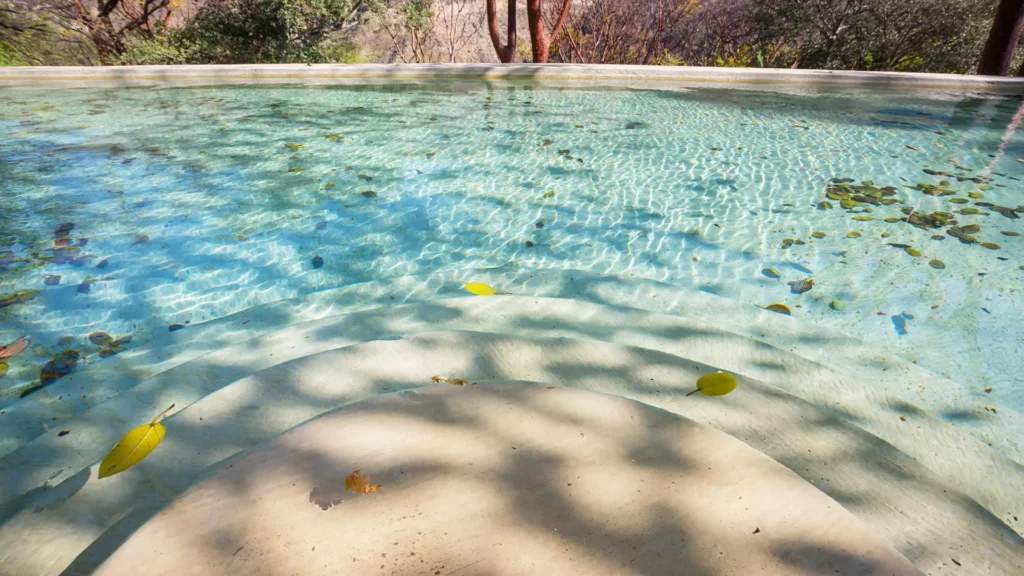
We’ve compiled some of the situations you may encounter due to the presence of fertilizers in pool water, surrounding vegetation, and other factors. How these situations worsen over time will depend on how quickly you identify them and develop a mitigation plan.
Vegetation in the surrounding area
Branches and leaves falling from trees or plants around your pool may seem harmless, but the substances they carry can be detrimental to the pool’s water conditions.
Increased presence of algae around the pool
Elements such as phosphate present in fertilizers can increase the proliferation of aquatic plants or algae around areas of your pool, and this will continue to affect the water the longer you allow it to spread.
Increased Chlorine Use
Algae can be eliminated with chlorine; however, if there is a chemical imbalance caused by an increased presence of phosphates in the water, this means that increased chlorine use will be required to maintain the pool’s water. Remember that one of the main causes of chemical imbalances in pools is derived from fertilizers.
Green Water and Black Spots in Pool, not Algae
Combining all of the above factors, this will undoubtedly mean very poor water conditions, turning the water green and with an unpleasant odor.
It’s also important to learn to recognize the type of vegetation growing in your area that can directly affect your pool water, especially in hot weathers like Dallas, Texas.
Living with Vegetation and a Pool in the Same Place

Maintaining your garden or the vegetation you decorate will directly affect your pool water if it’s located too close together. An ideal solution would be to create barriers or dividers to prevent leaves or fertilizers from reaching the pool water.
This doesn’t necessarily have to involve a large financial investment, but rather a practical solution that you have at hand. Save money now by intelligently separating your spaces and avoid a costly investment later when these chemicals affect your relaxation areas.
Enjoy your space without the presence of chemicals and fertilizer in pool water
After this brief review, you should have a clear picture of the general aspects you should consider for pool maintenance. Remember, also consider aspects related to the climate and type of vegetation that grows in Dallas, Texas.
Without a doubt, a pool maintenance team is the most practical solution to avoid headaches. After all, although these are situations you can avoid, they will also require a lot of attention from you. So, make the best decision that allows you to protect your pool water according to the time you have available.
FAQs about vegetation and fertilizer in pool water
1. What elements can affect the conditions of pool water?
Surrounding vegetation and fertilizers that contain phosphate as a chemical component.
2. Can algae appear in pool water?
Yes, it’s primarily aquatic plants that can appear in your pool if conditions allow it to proliferate. The cause can generally be surrounding vegetation and fertilizers.
3. Can chlorine eliminate algae?
It can be effective if the chemical balance in the pool is adequate, but compounds like phosphates present in various fertilizers can affect its effectiveness.
4. What can I do to protect my pool water?
Try to keep elements like vegetation and fertilizers away from the pool water. If you don’t have the time, hire a maintenance team who can help you with this task.

